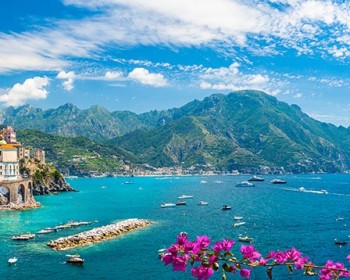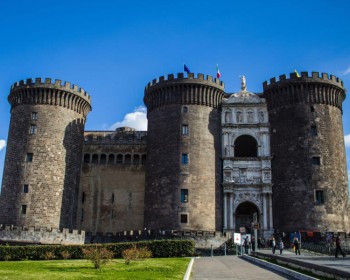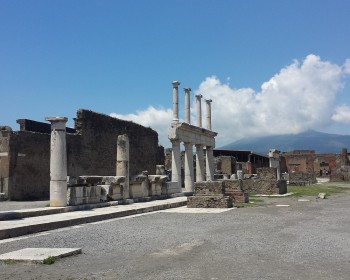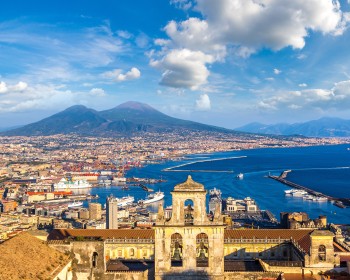Vesuvius is one of the most famous volcanoes in the world and the symbol of the city of Naples. Mount Vesuvius (Latin: Vĕsŭvǒus) is located on the south-eastern side of the city of Naples in Campania. It has a truncated-conical shape, its highest point reaches 1,277 m s.l.m. and the crater has a diameter of 450 m and a depth of 300 m.
Discover its history and natural beauty with our Pompeii and Vesuvius Shore Trip.
The history of the Somma-Vesuvio volcanic complex
The Somma-Vesuvius volcanic complex was founded about 400,000 years ago and its history is divided into 3 main periods:
- From the origins to the eruption of 79 AD, the period in which the ancient Monte Somma Volcano was formed and then destroyed by a series of eruptions;
- From 79 A.D. to 1631. the year in which a very powerful eruption occurred (79 AD) that buried the cities of Pompeii, Oplonti, Herculaneum and Stabia;
- From 1631 to the present. 1631 is the year in which another violent eruption occurred, followed by numerous other eruptions until 1944, the year of the last eruption that then marked the current phase defined as "active rest".
The eruptions of Vesuvius
Vesuvius is an explosive volcano characterized by numerous eruptions. Among the main eruptions of Vesuvius we remember undoubtedly that of 1979 and the last eruption dated March 18, 1944.
Eruption of Vesuvius in 79
The eruption of Vesuvius in 79 is the main eruptive event that changed the morphology of the volcano and determined the destruction of Pompeii, Herculaneum and Stabia.
The volcanic activity was manifested, starting from February 5, 63 AD, initially by the earthquake that preceded the violent eruption occurred on August 24, 79 A.D. that destroyed and buried completely under ash, lapilli and lava the three cities of Herculaneum, Pompeii and Stabia.
The ruins of these cities have been unearthed since the 18th century.
This eruption is called plinian, as it was dated and documented by a literaea of Pliny the Younger.
The last eruption of 1944
The last eruption of Vesuvius occurred on March 18, 1944, during the Second World War. 21 million cubic meters of lava were emitted, numerous towns were destroyed and the ashes reached Albania.
The eruptive phase decreased from 24 March and finally ceased on 29 March 1944.
Some interesting facts about Mount Vesuvius
Vesuvius was a stage of the tour of Italy:
- On 23 May 1990 the third stage of the Giro d'Italia ended at Vesuvio with the victory of Eduardo Chozas;
- On 29 May 2009, the nineteenth stage of the Giro d'Italia ended at Vesuvio with the victory of Carlos Sastre.
Some works of art have been dedicated to Vesuvius, including the poem by Sincero Accademico Insensato: "Il Vesuvio Fiammeggiante", Naples 1632, dedicated to Giacomo Theodoli, then archbishop of Amalfi.
Vesuvius is linked to many stories and legends such as the story of the Nymph Marina Leucopetra whose love was disputed between Vesevo and Sebeto. According to a legend, a girl who was on the beach collecting shells was joined by two men who tried to kidnap her. The Nymph threw herself into the sea and turned into stone.
In desperation, Vesevo turned into lava stone and Sebeto into a river. The birth of Vesuvius is due to the anger of Vesevo who made the stones grow in height forming the famous Neapolitan volcano.
Another legend is linked to Pulcinella. The Neapolitan mask, according to a legend of '700, would be born from a shell placed under Vesuvius by Pluto (God of the Underworld and the Dead) to solve the injustices of the city.








